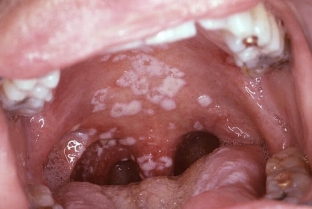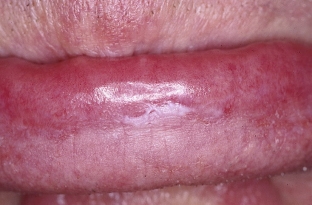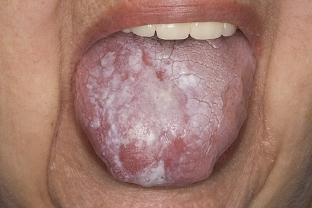The human tongue consists of 7 muscles, which are combined into 2 groups – skeletal muscles and muscles of the tongue proper. Skeletal muscles are attached to the bones of the skull, the muscles of the tongue contribute to a change in the shape of the tongue and its great mobility. The tongue is an organ, by its appearance one can suspect or reveal some diseases of the internal organs.
Also, the tongue itself can be affected by some pathological processes. Therefore, every person should pay attention to the appearance of their tongue, because any change in color, size or shape has certain reasons. What changes are observed in diseases of the tongue?
What diseases of the tongue are manifested by a white coating on the tongue
White plaque on the tongue indicates the presence of a pathology of the organs of the stomach – intestinal tract, and may also indicate a disease of the tongue. Let us consider in more detail the possible causes of white plaque in the tongue:
- Candidal stomatitis of the oral cavity. Yeast lesions of the oral cavity are characterized by the formation of white plaques, which are localized in the oral cavity and on the surface of the tongue. Outwardly, such plaques look like cottage cheese. More often, candidiasis develops in young children, the elderly, people wearing dentures, and people with impaired immune status. Patients with diabetes mellitus and patients who take hormonal treatment in the form of a spray for lung diseases and asthma are at risk for developing oral candidiasis. Also, candidiasis can develop after taking antibacterial agents.

- Leukoplakia. Pathology is characterized by a very rapid growth of cells, which is the reason for the formation of white plaques in the oral cavity and on the tongue. Such a disease of the tongue as leukoplakia does not disturb the patient, however, it may indicate an oncological process of the oral cavity or tongue. Leukoplakia often develops in people who smoke. The dentist, when detecting white plaques on the tongue, must establish the exact cause of their formation.

- Lichen planus is manifested by the formation of a network of white lacy lines on the tongue, which is a pathognomonic symptom. The cause of this disease of the tongue is not fully established. Oral hygiene and limiting the use of certain foods helps to relieve irritation.

What diseases of the tongue may indicate a change in its color
In normal condition, the tongue is pale pink or pink in color. A change in color indicates a disease of the tongue, a pathology of the internal organs, or an infectious disease.
Geographical language. This disease of the tongue is also called desquamative glossitis and is accompanied by discoloration of the taste buds in regions with the possible appearance of cracks in the tongue. The disease manifests against the background of stressful situations and hormonal surges, having a chronic relapsing course. Geographic tongue is the oral form of chronic erythema migrans.
Black hairy tongue develops due to poor oral hygiene, diabetes mellitus, and also in patients after a course of chemotherapy.
Causes of tongue reddening:
- The lack of folic acid and vitamin B12 is reflected on the tongue in the form of redness. Such a tongue has a bright red color and a glossy unnatural sheen, which is called "lacquer tongue".
- In scarlet fever, the tongue becomes suddenly bright red along with the pharynx, which in medicine is called the "fiery pharynx". With such a condition of the oral cavity and an increase in temperature, you should immediately consult a doctor.
- Kawasaki Syndrome – an acute disease that develops in childhood with vascular damage. In this case, there is an increase in temperature, redness and swelling of the limbs, as well as a red color of the tongue.
Soreness in the tongue can be observed after injuries, against the background of prolonged frequent smoking, with inflammation of the papillae of the tongue, with glossodynia during menopause, and also with aphthous stomatitis. Any change in color, taste, mobility, size or shape of the tongue should be the reason for going to the doctor, because this may be a sign of a disease of the tongue or internal organs that require treatment.






Add a comment